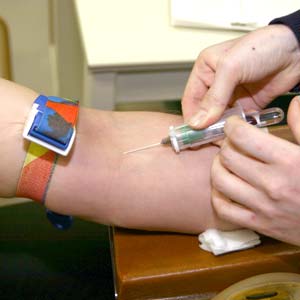The benefits of screening for prostate cancer are still being studied. The National Cancer Institute (NCI), a component of the National Institutes of Health, is currently conducting the Prostate, Lung, Colorectal, and Ovarian Cancer Screening Trial, or PLCO trial, to determine whether certain screening tests can help reduce the number of deaths from these cancers. The PSA test and DRE are being evaluated to determine whether yearly screening to detect prostate cancer will decrease a man’s chances of dying from this disease.
Initial results from the trial showed that annual PSA testing for 6 years and annual DRE testing for 4 years (performed in the same years as the first four PSA tests) did not reduce the number of deaths from prostate cancer through a median follow-up period of 11.5 years (range 7.2 to 14.8 years) (5). At 7 years of follow-up, a point in time when follow-up of the participants was essentially complete, 23 percent more cancers had been diagnosed in the screening group than in the control group. In the control group, men were randomly assigned to “usual care.”
These results suggest that many men were diagnosed with, and treated for, cancers that would not have been detected in their lifetime without screening and, as a consequence, were exposed to the potential harms of unnecessary treatments, such as surgery and radiation therapy. Nevertheless, it remains possible that a small benefit from the earlier detection of these “excess” cancers could emerge with longer follow-up. Follow-up of the PLCO participants will continue, therefore, until all participants have been followed for at least 13 years.
In contrast, initial results from another large randomized, controlled trial of prostate cancer screening, called the European Randomized Study of Screening for Prostate Cancer (ERSPC), found a 20 percent reduction in prostate cancer deaths associated with PSA testing every 4 years (6). At the time the results were reported, the participants had been followed for a median of 9 years. The average number of PSA tests per participant in ERSPC was 2.1. Most participating centers in this study used a lower PSA cutoff value as an indicator of abnormality than was used in the PLCO trial (3.0 ng/mL versus 4.0 ng/mL). As in the PLCO trial, many more cancers were diagnosed in the screening group than in the control group. The ERSPC researchers estimated that 1,410 men would have to be screened and 48 additional cancers would have to be detected to prevent one death from prostate cancer (6).

Scientists are also researching ways to improve the PSA test, hopefully to allow cancerous and benign conditions, as well as slow-growing cancers and fast-growing, potentially lethal cancers, to be distinguished from one another. Some of the methods being studied include the following:
* PSA velocity: PSA velocity is the change in PSA level over time. A sharp rise in the PSA level raises the suspicion of cancer and may indicate a fast-growing cancer. A 2006 study found that men who had a PSA velocity above 0.35 ng/mL per year had a higher relative risk of dying from prostate cancer than men who had a PSA velocity less than 0.35 ng/mL per year (7). More studies are needed to determine if a high PSA velocity more accurately detects prostate cancer early.
* PSA density: PSA density considers the relationship between the level of PSA and the size of the prostate. In other words, an elevated PSA level might not arouse suspicion if a man has a very enlarged prostate. The use of PSA density to interpret PSA results is controversial because cancer might be overlooked in a man with an enlarged prostate.
* Free versus attached PSA: PSA circulates in the blood in two forms: Free or attached to a protein molecule. The free PSA test is more often used for men who have higher PSA values. Free PSA may help tell what kind of prostate problem a man has. With benign prostate conditions (such as BPH), there is more free PSA, while cancer produces more of the attached form. If a man’s attached PSA level is high but his free PSA level is not, the presence of cancer is more likely. In this case, more testing, such as a prostate biopsy, may be done. Researchers are exploring additional ways of measuring PSA and comparing these measurements to determine whether cancer is present.

* Alteration of PSA cutoff level: Some researchers have suggested lowering the cutoff levels used to determine whether a PSA measurement is normal or elevated. For example, a number of studies have used cutoff levels of 2.5 or 3.0 ng/mL (rather than 4.0 ng/mL). In such studies, PSA measurements above 2.5 or 3.0 ng/mL are considered elevated. Researchers hope that using these lower cutoff levels will increase the chance of detecting prostate cancer; however, this method may also increase overdiagnosis and false-positive test results and lead to unnecessary medical procedures. (See ERSPC trial results above.)







